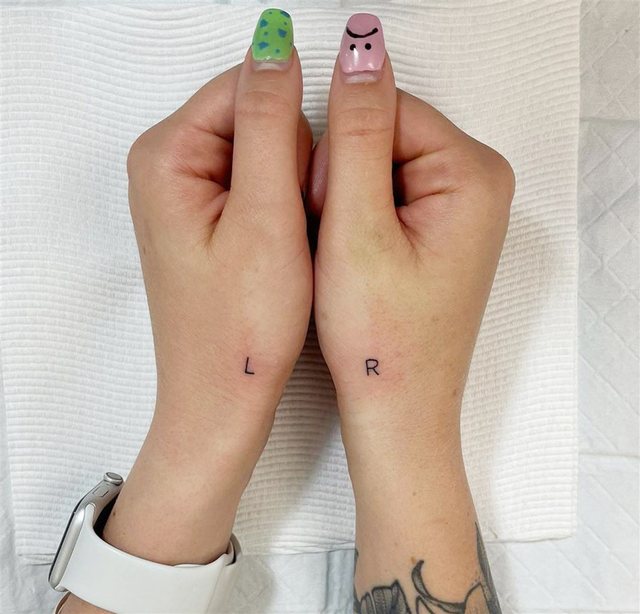
Saying the difference between left and right may seem as simple as saying up and down. But it is not so easy for a considerable part of the population.
Lauren Winzer, a tattoo artist in Sydney, Australia, recently posted a photo of a client requesting that the letters "L" (left) and "R" (right) be permanently in her hands to help her find running.
"Not only are tattoos delightful, but they can also be super functional," she wrote on her Instagram page.
The girl who had the tattoo told the Daily Mail Australia that it had always been difficult to distinguish between left and right, to the point where a friend once drew an "L" and an "R" on her hands. Then began the idea of â??â??something more permanent.

Nearly 15% of the general population reported having trouble identifying left to right, according to a study published last fall in the Quarterly Journal of Experimental Psychology.
An early study concluded that right-left confusion "often occurs in adults, even with high intellect." Women seem to be more sensitive to it than men, another revealed.
At least two processes are critical to this seemingly simple distinction: a perceptual / spatial process - choosing one side, not the middle; and a labeling process - pasting the word "right" to the "right" side, said Marco Andre Hirnstein, a professor in the Department of Biological and Medical Psychology at the University of Bergen in Norway, who studies the phenomenon.
It's the labeling process where things usually go wrong, he noted.
Brain damage can also cause the phenomenon: ‘Gerstmann Syndrome’, a rare neurological disorder that can occur after a stroke and leave patients unable to distinguish between the right and left side of their body.
But for the vast majority of people with right-left confusion, this is just a ‘brainwashing’.





